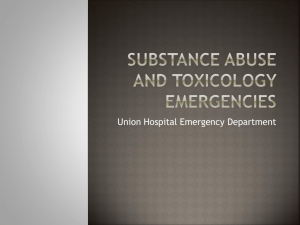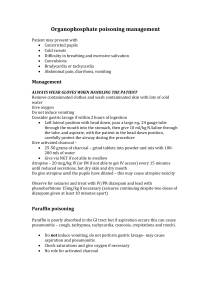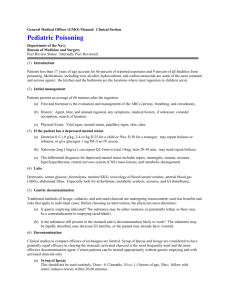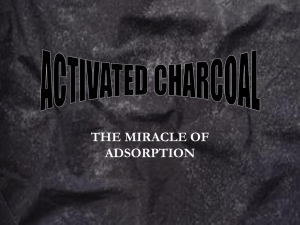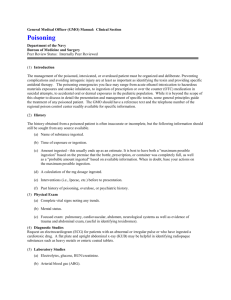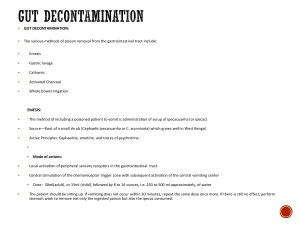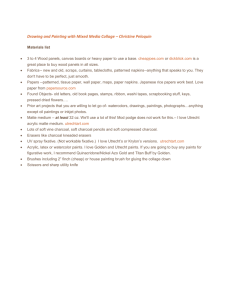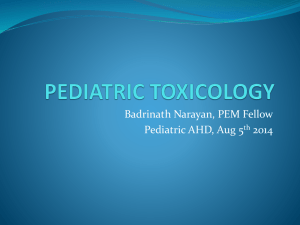substances ingestion
advertisement
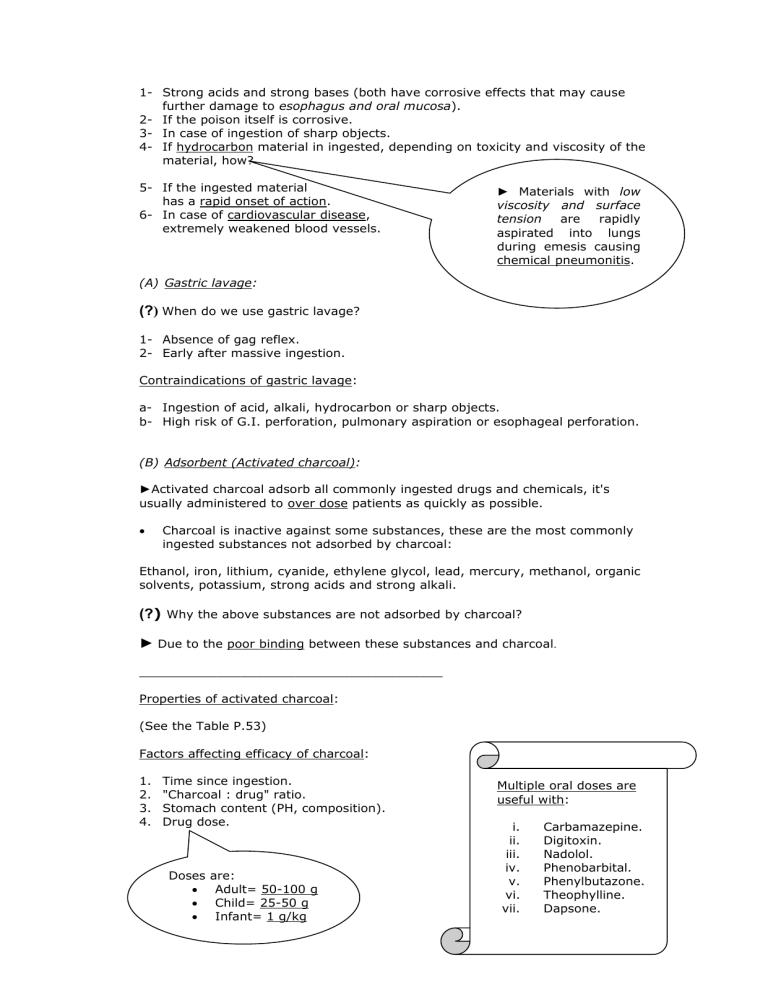
1- Strong acids and strong bases (both have corrosive effects that may cause further damage to esophagus and oral mucosa). 2- If the poison itself is corrosive. 3- In case of ingestion of sharp objects. 4- If hydrocarbon material in ingested, depending on toxicity and viscosity of the material, how? 5- If the ingested material has a rapid onset of action. 6- In case of cardiovascular disease, extremely weakened blood vessels. ► Materials with low viscosity and surface tension are rapidly aspirated into lungs during emesis causing chemical pneumonitis. (A) Gastric lavage: (?) When do we use gastric lavage? 1- Absence of gag reflex. 2- Early after massive ingestion. Contraindications of gastric lavage: a- Ingestion of acid, alkali, hydrocarbon or sharp objects. b- High risk of G.I. perforation, pulmonary aspiration or esophageal perforation. (B) Adsorbent (Activated charcoal): ►Activated charcoal adsorb all commonly ingested drugs and chemicals, it's usually administered to over dose patients as quickly as possible. Charcoal is inactive against some substances, these are the most commonly ingested substances not adsorbed by charcoal: Ethanol, iron, lithium, cyanide, ethylene glycol, lead, mercury, methanol, organic solvents, potassium, strong acids and strong alkali. (?) Why the above substances are not adsorbed by charcoal? ► Due to the poor binding between these substances and charcoal. _______________________________________ Properties of activated charcoal: (See the Table P.53) Factors affecting efficacy of charcoal: 1. 2. 3. 4. Time since ingestion. "Charcoal : drug" ratio. Stomach content (PH, composition). Drug dose. Doses are: Adult= 50-100 g Child= 25-50 g Infant= 1 g/kg Multiple oral doses are useful with: i. ii. iii. iv. v. vi. vii. Carbamazepine. Digitoxin. Nadolol. Phenobarbital. Phenylbutazone. Theophylline. Dapsone. Adverse effects: Bowel obstruction may occur with multiple doses and/or patients who receive concomitant therapy with neuromuscular blocking agents. (C) Whole bowel irrigation: This method shown to be effective under certain conditions, particularly when activated charcoal lacks efficacy. Administration: ♦ An isoosmotic cathartic solution such as polyethylene glycol (dose= 1-2 L/hr) is administered orally or by gastric tube until rectal effluent is clear and dose does not lead to fluid or electrolytes imbalance. Methods used to increase elimination of toxicant: (A) Forced diuresis (PH manipulation): Properties: Used to enhance elimination renally (used only for renal excreted drugs). Small volume of distribution. Low protein binding. Disadvantages: Electrolytes imbalance. Fluid disturbances. "Alkaline diuresis" ■ Promote ionization of weak acids by preventing renal reabsorption; and so facilitate the excretion of weak acids. ■ Use: a- Long acting barbiturate (Phenobarbital). b- Salicylic acid. ■ Dose: 1. 50-100 mEq (mili equivalent) sodium bicarbonate (NaHCo3) I.V. bolus followed by continuous infusion of 50-100 mEq NaHCo3 in 1 liter of 0.25-0.45 normal saline. 2. Maintain urine PH = 7.3-8.5 3. Urine output should be 5-7 ml/kg/hour. ■ Complications: Metabolic alkalosis. Hyperosmolarity. Fluid over load. Hypernatremia. (B) Dialysis(enhance the drug elimination): This method can be used for: ♦ It could be done under the following conditions: i. ii. iii. iv. Small volume of distribution. Small molecular weight (M.wt.). Low protein binding. Water soluble. (C) Hemoperfusion: Ethanol Theophylline Lithium Salicylates Long acting barbiturates Ethylene glycol Methanol Paraquat (pesticide) Note: It's a technique in which blood is passed through a column containing activated charcoal or resin particles. This method is more rapid than hemodialysis, but does not correct fluid and electrolytes imbalance. Hemoperfusion is more effective than hemodialysis in removing Phenobarbital, phenytoin, carbamazepine, methotrexate and theophylline. However, it's less effective in removing ethanol and methanol. ______________________________________ Topical decontamination: Lipid soluble chemicals on Skin Absorption to give Systemic effect ► Decontamination: Remove all contaminated clothes, flush with water mild soap (green soap= liniment soap containing 30% alcohol), why alcohol? Avoid using creams, ointments or occlusive bandages over the contaminated area. Because alcohol dissolve the lipids and decrease the absorption. ► Eye: The absorption occurs via the cornea which results in permanent damage and loss of sight. (?) What to do in case of contaminated eye? 1) Rinse the eye immediately with water and continue for 15-20 minutes. 2) If contact lenses are present; remove them and wash with soft flowing water. 3) Now, the eye should seek immediate medical advice.
